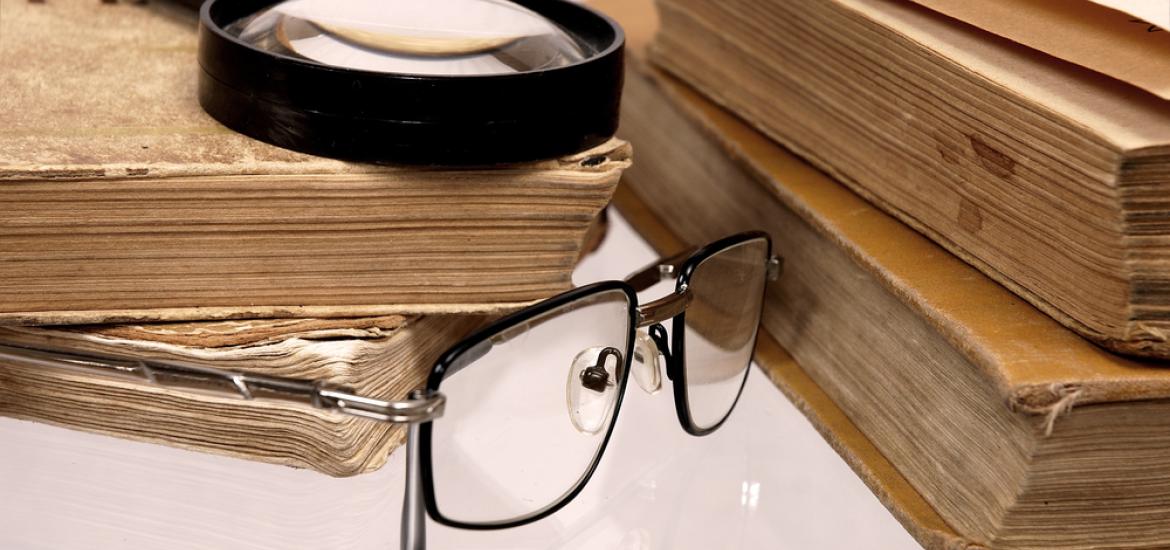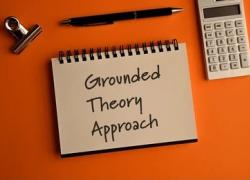An Introduction to Historical Research Design
Historical research design is a methodological approach that investigates and interprets past events, cultures, and phenomena through the analysis of historical sources. Researchers employing this design delve into primary and secondary sources, such as documents, artifacts, and testimonies, to construct a comprehensive understanding of the past.
This method involves critical analysis, contextualization, and the establishment of chronological frameworks to discern patterns, causes, and effects in historical developments. The goal is not only to narrate events but to interpret their significance within the broader historical context. Ethical considerations, including respect for privacy and sensitivity to diverse perspectives, are integral to the practice of historical research design. Overall, this approach contributes to our comprehension of the complexities and dynamics of human history across different periods and cultures.
This blog post aims to discuss the basics of Historical Research Design and advance your understanding concerning different aspects of this research design. This post is your gateway into the methodologies and intricacies of historical research design. From delving into ancient manuscripts to deciphering the narratives of bygone eras, historical research design is the key that unlocks the stories of our ancestors.
This write-up explores the fundamentals of Historical Research Design that shape the journey of researchers as they piece together the puzzle of history or archival documents at a time and will cover mainly the following areas.
- What is Historical Research Design?
- Why is it called Historical Research Design?
- Definitions of Historical Research Design
- Understanding of Historical Research Design from different perspectives
- A brief history of Historical Research Design
- What are the major fields of study in which Historical Research Design is used?
- Can historical research design be used in health care?
- What are the key characteristics/features of a Historical Research Design?
- What are the types of Historical Research Design?
- What is the main aim/purpose of a Historical Research Design?
These important topics are discussed here in detail:
What is Historical Research Design?
Historical research design refers to the methodology and approach used by researchers to investigate and understand past events, phenomena, patterns and oral histories. It is a type of research design that focuses on studying historical data, documents, artifacts, and other sources to reconstruct and interpret events and their contexts.
It is a systematic approach to investigating past events using various sources of evidence, It involves identifying research questions, gathering data, analyzing evidence, and interpreting findings to gain a deeper understanding of the past.
Historical research design can be applied in various academic disciplines, including history, anthropology, sociology, and cultural studies. Researchers use a variety of methods, such as archival research, oral history interviews, and content analysis, to uncover and analyze historical data.
Why is it called Historical Research Design?
The term “Historical Research Design” encompasses the systematic approach that researchers employ to study and understand historical events and phenomena. Let’s break down the components of the name:
- Historical: This term signifies the focus on the past. Historical research is concerned with events, cultures, and occurrences that have taken place in earlier times. It involves the examination of historical records, artifacts, and other sources to reconstruct and interpret the past.
- Research: The term “research” emphasizes the systematic and investigative nature of the process. Researchers actively seek out and analyze information to answer specific questions or gain insights into historical issues. This involves a rigorous exploration of primary and secondary sources to gather evidence and construct a narrative.
- Design: The inclusion of “design” highlights the structured and intentional nature of the methodology. In the context of historical research, design refers to the plan or framework that guides the research process. This plan involves considerations such as the selection of sources, methods of analysis, and the overall strategy for approaching historical questions.
In essence, “Historical Research Design” reflects the intentional and structured approach historians take when conducting research on the past events or happenings. It acknowledges that historical inquiry involves more than a casual exploration of the past; it requires a thoughtful and systematic design to uncover, interpret, and communicate the stories embedded in historical records.
Definitions of Historical Research Design
Various authors have defined Historical Research Design differently. These minor differences can be attributed to several factors, including disciplinary backgrounds, theoretical perspectives, methodological preferences, and the evolving nature of historical scholarship. Here are some definitions of historical research design from different authors:
Robert V. Krueger and Mary A. Casey (2009) argued that historical research is a systematic study of the past, relying on primary and secondary sources to understand human events, trends, and processes over time. It involves a rigorous process of investigation, evaluation, and interpretation of evidence to reconstruct past events and develop meaningful historical narratives.
Similarly, Thomas J. Ricks (2009) believed that historical research is the use of historical sources, such as documents, artifacts, and oral histories, to investigate past events and develop an understanding of human behavior over time. It is a process of inquiry that involves identifying research questions, gathering and evaluating evidence, and constructing plausible explanations for past events.
According to William H. Sewell Jr. (2005) historical research is a systematic process of inquiry into the past that aims to reconstruct past events, identify causal relationships, and explain historical change. It involves the careful collection, evaluation, and interpretation of evidence to develop a nuanced understanding of the past. To Gabrielle M. Spiegel (2011) historical research is a mode of inquiry that employs a variety of methods and sources to investigate the past. It involves a process of critical analysis, interpretation, and synthesis to reconstruct past events and develop meaningful historical narratives.
Christine Lee (2014) elucidated that historical research is a systematic and rigorous approach to understanding the past through the examination of primary and secondary sources. It involves a process of identifying research questions, locating and evaluating evidence, constructing arguments, and communicating findings.
These definitions highlight the key aspects of historical research design, emphasizing its systematic approach, reliance on evidence, and focus on understanding the past. Historical research is a complex and multifaceted endeavor that requires careful consideration of sources, methods, and interpretations.
Understanding of Historical Research Design from different perspectives?
The general perspectives on historical research design have been expressed by scholars in their respective fields. These perspectives often converge on the systematic and methodological nature of historical research. However, it’s important to consult specific works by authors for their nuanced definitions. Here are some general perspectives:
- Systematic investigation of the past: Historical research design refers to a systematic and intentional investigation of past events, cultures, and phenomena through the critical analysis of historical sources, artifacts, and records.
- Methodological framework for understanding history: It is a methodological framework employed by researchers to explore and interpret the complexities of history, utilizing primary and secondary sources to construct a coherent narrative of the past.
- Structured approach to uncover historical realities: Historical research design represents a structured approach to uncovering historical realities, involving the careful selection and analysis of diverse sources to reveal the multifaceted dimensions of historical events.
- Organized exploration of primary and secondary sources: It involves the organized exploration of primary sources (contemporary documents, artifacts) and secondary sources (interpretations, analyses) to reconstruct historical events, understand causation, and appreciate the context in which they unfolded.
- Chronological analysis and interpretation: Historical research design includes chronological analysis and interpretation, allowing researchers to establish timelines, identify patterns, and provide nuanced interpretations of historical developments.
- Ethically grounded study of the past: It is an ethically grounded study of the past, requiring researchers to navigate issues of privacy, cultural sensitivity, and respect for diverse perspectives when engaging with historical sources and narratives.
- Causal exploration and contextual understanding: Historical research design involves causal exploration, seeking to understand the factors and conditions that contributed to historical events. It emphasizes contextual understanding to provide a more comprehensive view of the past.
- Triangulation of historical evidence: Researchers employ triangulation by cross-referencing multiple sources of historical evidence to enhance the reliability and validity of their findings, ensuring a more robust and well-supported historical narrative.
- Interpretive analysis of significance: It goes beyond mere documentation by incorporating interpretive analysis, wherein researchers seek to understand and communicate the significance of historical events within the broader historical context.
- Structured plan for historical inquiry: Historical research design is a structured plan guiding the entire process of historical inquiry, from the formulation of research questions to the synthesis of findings into a cohesive and meaningful historical narrative.
A brief history of Historical Research Design.
The development of historical research design is deeply intertwined with the evolution of historical methodology and the broader field of history. There are several key figures who have significantly contributed to shaping the methodologies and approaches used in historical research over time. It’s important to note that historical research design, as a formalized concept, has evolved gradually and does not have a single origin.
Here are some key milestones and contributors in the development of historical research design:
- Leopold von Ranke (1795–1886): Often regarded as one of the founding figures of modern historical scholarship, Ranke emphasized the importance of using primary sources and adopting a critical, source-based approach. His influence contributed to the development of a more systematic and rigorous approach to historical research.
- Charles Beard (1874–1948): Charles Beard, an American historian, advocated for an economic interpretation of history. His work, including “An Economic Interpretation of the Constitution of the United States,” influenced the study of history by highlighting the role of economic factors in shaping historical events.
- Marc Bloch (1886–1944): A co-founder of the Annales School of history, Bloch emphasized the importance of interdisciplinary approaches and the study of long-term historical structures. His work encouraged a more comprehensive and contextual understanding of historical phenomena.
- Fernand Braudel (1902–1985): Building on the Annales School tradition, Braudel introduced the concept of the “longue durée” (long term) in historical research. He encouraged historians to study the deep structures of history, including geography, climate, and social structures, over extended periods.
- H. Carr (1892–1982): In his influential work “What Is History?” Carr discussed the role of the historian as an interpreter and emphasized the subjective nature of historical interpretation. He encouraged historians to be conscious of their biases and perspectives.
- Natalie Zemon Davis (1928): Davis, a contemporary historian, has contributed to social history and emphasized the importance of including diverse voices and perspectives in historical research. Her work has influenced the study of history from the bottom up, focusing on the experiences of ordinary people.
While these scholars played crucial roles in shaping historical research methodologies, the concept of Historical Research Design emerged more formally in the 20th century as historians increasingly recognized the need for systematic approaches to guide their inquiries. Today, historical research design continues to evolve as scholars incorporate new methods, technologies, and interdisciplinary approaches into their studies.
What are the major fields of study in which Historical Research Design is used?
Historical qualitative research design is employed across various fields where a nuanced understanding of the past is essential. This design can be applied in various academic disciplines, including history, anthropology, sociology, and cultural studies. Researchers use a variety of methods, such as archival research, oral history interviews, and content analysis, to uncover and analyze historical data.
In history itself, historians use qualitative methods to delve into primary sources, interpret narratives, and uncover the complexities of past events. Anthropologists apply historical qualitative research design to explore the cultural dynamics of past societies, while sociologists use it to investigate the historical context of social phenomena and societal structures. Archaeologists utilize qualitative methods to analyze artifacts within their historical context. Cultural studies scholars examine the historical development of cultural practices, identities, and representations. In literary studies, researchers employ historical qualitative research design to analyze texts in their historical and cultural contexts, unveiling the literary, social, and cultural dynamics of different periods. Education researchers explore the historical evolution of educational systems and practices. Political scientists investigate the historical development of political institutions, ideologies, and movements. In religious studies, scholars use historical qualitative research design to understand the development of religious beliefs and practices over time.
The interdisciplinary nature of historical qualitative research design makes it a versatile tool across numerous fields, enabling researchers to uncover the multifaceted dimensions of the past.
Can Historical Research Design be used in health care?
While historical qualitative research design is not as commonly associated with healthcare research as it is with disciplines like history or anthropology, it can indeed be applied in healthcare contexts. Historical qualitative research design in healthcare involves using qualitative methods to explore and understand the historical dimensions of healthcare practices, policies, and patient experiences. Here are a few ways in which historical qualitative research design can be applied in healthcare:
- Evolution of healthcare practices:Researchers can use historical qualitative research design to investigate the historical development of healthcare practices, including medical treatments, diagnostic methods, and patient care. This can provide insights into the evolution of medical knowledge and the factors that have influenced healthcare delivery over time.
- Health policy and institutions: Historical qualitative research can be employed to study the development of health policies, healthcare institutions, and the role of government in shaping healthcare systems. Understanding the historical context of healthcare policy can inform current debates and decision-making processes.
- Patient experiences over time: Qualitative methods can be used to explore the historical experiences of patients in healthcare settings. This may involve examining historical documents, oral histories, or personal narratives to understand how individuals perceived and interacted with healthcare services in different eras.
- Socio-cultural perspectives on health: Researchers can use historical qualitative research design to explore the socio-cultural dimensions of health and illness over time. This may include studying cultural beliefs, social attitudes toward health, and historical changes in the perception of diseases.
- Ethical considerations in healthcare: Historical qualitative research can shed light on the ethical considerations in healthcare practices and research over different periods. This includes examining how ethical standards and practices have evolved and been influenced by societal values.
- Development of healthcare technologies: Researchers can investigate the historical development of healthcare technologies and their impact on medical practices. This may include but limited to the adoption of new medical devices, diagnostic tools, and technological innovations in healthcare delivery.
While historical qualitative research design is not the primary methodology in healthcare research, its application can offer a richer understanding of the historical context in which healthcare systems and practices have evolved. It allows researchers to uncover the socio-cultural, ethical, and institutional factors that have shaped the healthcare landscape over time.
What are the key characteristics/features of Historical Research Design?
A well-crafted historical research design possesses several key characteristics and features that guide the systematic investigation and interpretation of past events. The key features of historical research design include:
- Clear research questions: Historical research design begins with well-defined and focused research questions that set the direction for the investigation. These questions should be specific, relevant, and framed to address aspects of the past that the researcher aims to explore.
- Use of primary and secondary sources: The design incorporates a strategy for gathering and analyzing both primary and secondary sources. Primary sources are firsthand accounts or artifacts from the time being studied, while secondary sources include interpretations and analyses by later scholars.
- Critical analysis: Historians engage in critical analysis of sources, evaluating their reliability, authenticity, and bias. This involves considering the context in which the sources were created and assessing the perspectives and motivations of the individuals involved.
- Contextualization: Historical research design emphasizes placing events, individuals, and phenomena within their historical context. This involves understanding the social, cultural, economic, and political conditions that influenced and shaped the historical developments under investigation.
- Chronological framework: Establishing a chronological framework is crucial in historical research. Researchers organize events and developments in a timeline, facilitating the understanding of the sequence of occurrences and their temporal relationships.
- Interpretation: Historical research design includes an interpretative dimension. Researchers move beyond the mere narration of events to provide thoughtful interpretations of their meaning and significance. This involves analyzing patterns, causes, and consequences.
- Causal analysis: Investigating causation is a common feature. Historical research design often explores the factors and conditions that led to specific events or changes over time. Researchers seek to identify and understand the causal relationships at play.
- Triangulation: Researchers use triangulation by cross-referencing information from multiple sources to enhance the reliability and validity of their findings. This methodological approach strengthens the overall robustness of the historical narrative.
- Ethical considerations: Ethical considerations are integral to historical research design. Researchers must respect the rights and privacy of individuals and communities represented in historical records. This involves sensitivity to cultural perspectives and responsible handling of historical data.
- Reflective awareness of bias: Historians acknowledge the potential biases in historical sources and maintain a reflective awareness of their own biases. This self-awareness helps researchers approach the past with a critical yet open-minded perspective.
- Clarity in methodology: The research design includes a clear and transparent methodology outlining how data will be collected, analyzed, and interpreted. This clarity ensures that the research process is systematic and replicable.
These key characteristics collectively contribute to a well-designed and rigorous historical research study, enabling researchers to uncover and communicate a nuanced understanding of the past.
What are the types of Historical Research Design?
Historical research design encompasses various approaches and methods tailored to the specific goals of a study. Here are several types of historical research design:
- Descriptive research design: This type involves a detailed and comprehensive exploration of historical events, providing a thorough account without necessarily delving into causation or interpretation. It is often the starting point for historical inquiries.
- Explanatory research design: Explanatory designs aim to uncover the reasons or causes behind historical events or phenomena. Researchers using this design seek to understand the factors that contributed to specific outcomes in the past.
- Comparative research design: Comparative historical research involves analyzing similarities and differences between different historical contexts or events. By examining multiple cases, researchers can identify patterns, variations, and underlying factors.
- Longitudinal research design: Longitudinal designs track the development of a specific subject or phenomenon over an extended period. This approach is valuable for studying changes and continuities across different historical epochs.
- Retrospective research design: Researchers employing a retrospective design study historical events or phenomena that have already occurred. This design is common in medical and epidemiological research, where investigators examine past events to identify potential causes.
- Oral history research design: Oral history designs involve collecting and analyzing firsthand accounts of individuals who have lived through specific historical events. This approach is particularly valuable for preserving and understanding personal experiences.
- Biographical research design: Biographical research designs focus on the life and experiences of a particular individual in history. By examining an individual’s biography, researchers can gain insights into broader historical contexts.
- Content analysis research design: Content analysis involves systematically analyzing and interpreting the content of historical documents, texts, or artifacts. Researchers use this design to identify patterns, themes, and trends within the historical record.
- Archival research design: Archival research designs center on the systematic examination of historical documents, records, and materials housed in archives. This approach is fundamental for uncovering primary sources and constructing historical narratives.
- Narrative research design: Narrative research designs focus on the storytelling aspect of historical research. Researchers construct narratives to convey the sequence of events and interpret the meaning and significance of historical occurrences.
These types of historical research designs are not mutually exclusive, and researchers often employ a combination of approaches to address their research questions comprehensively. The choice of design depends on the nature of the historical inquiry and the specific goals of the study.
What is the main aim/purpose of a Historical Research Design?
The aim or purpose of a historical research design is to systematically investigate and interpret past events, cultures, and phenomena. The design provides a structured framework for conducting historical research, guiding researchers in their exploration of the past. The key purposes of a historical research design include:
- Understanding the past: The primary aim of historical research design is to deepen our understanding of the past. Researchers seek to uncover and analyze historical events, cultures, and developments, aiming to provide insights into the complexities of human history.
- Reconstructing historical narratives: Historical research design facilitates the reconstruction of historical narratives. Researchers use a combination of primary and secondary sources to piece together a coherent and accurate account of what happened in the past.
- Interpreting significance: Historical research design aims to interpret the significance of historical events and phenomena. It goes beyond mere documentation, offering insights into the meaning and implications of past occurrences within their historical context.
- Identifying patterns and trends: Researchers use historical research design to identify patterns, trends, and recurring themes in historical data. This helps in recognizing broader historical forces, social changes, and cultural shifts over time.
- Exploring causation: Historical research design allows researchers to explore causation in historical events. By analyzing the factors and conditions that led to specific outcomes, researchers seek to understand the cause-and-effect relationships shaping the past.
- Contextualizing historical developments: Contextualization is a key purpose of historical research design. Researchers aim to place historical events within their broader social, cultural, economic, and political context, providing a more comprehensive understanding.
- Contributing to historical knowledge: Historical research design contributes to the body of historical knowledge. By conducting rigorous and systematic research, scholars add new insights, perspectives, and interpretations to our collective understanding of the past.
- Preserving cultural heritage: Historical research design plays a role in preserving cultural heritage. By documenting and interpreting historical events, researchers contribute to the preservation of cultural and historical artifacts, traditions, and memories.
- Informing contemporary understanding: Historical research design has the purpose of informing contemporary understanding. By studying the past, researchers and society at large can gain insights into the origins of current issues, institutions, and cultural practices.
- Enhancing critical thinking: Engaging in historical research design cultivates critical thinking skills. Researchers must critically analyze sources, question assumptions, and navigate complexities, fostering a disciplined and rigorous approach to understanding the past.
Conclusion
In summary, the aim of historical research design is multifaceted, encompassing the exploration, interpretation, and contextualization of the past to contribute to our broader understanding of human history. The choice of research design depends on the specific research questions being investigated and the availability of relevant sources. Historians often employ a combination of methods to gain a comprehensive understanding of the past.
These types of historical research design represent the diverse approaches that historians employ to investigate the past. Each approach has its strengths and limitations, and the choice of method depends on the specific research objectives and the nature of the available evidence.
The next blog post provides you with a step-by-step guide for developing a historical research design and will cover the following important topics:
- Importance of Historical Research Design
- Strengths and limitations of Historical Research Design
- What research philosophy suits Historical Research Design?
- Why do researchers select a Historical research design?
- Is the Historical research design qualitative or quantitative in nature?
- What are the most commonly used data collection methods in Historical Research Design?
- How to develop a Historical Research Design?
- What are the procedures involved in Historical Design?
- How many participants used to be engaged in Historical Research?
- What is the common format or structure of a Historical Research Study?
- How long should be a Historical Research study?
- Who utilizes the Historical Research?
- How is Historical Research Design used?


















